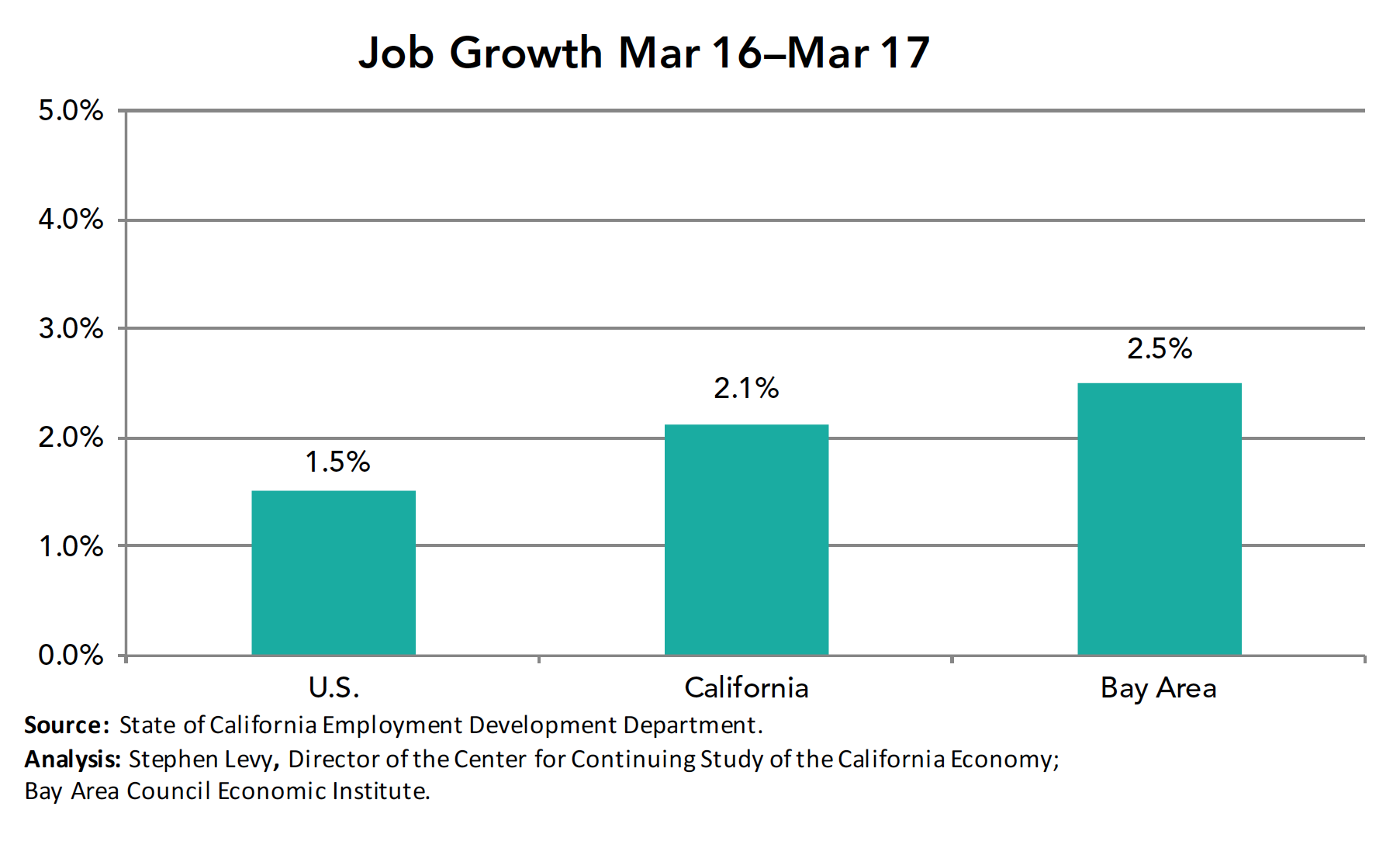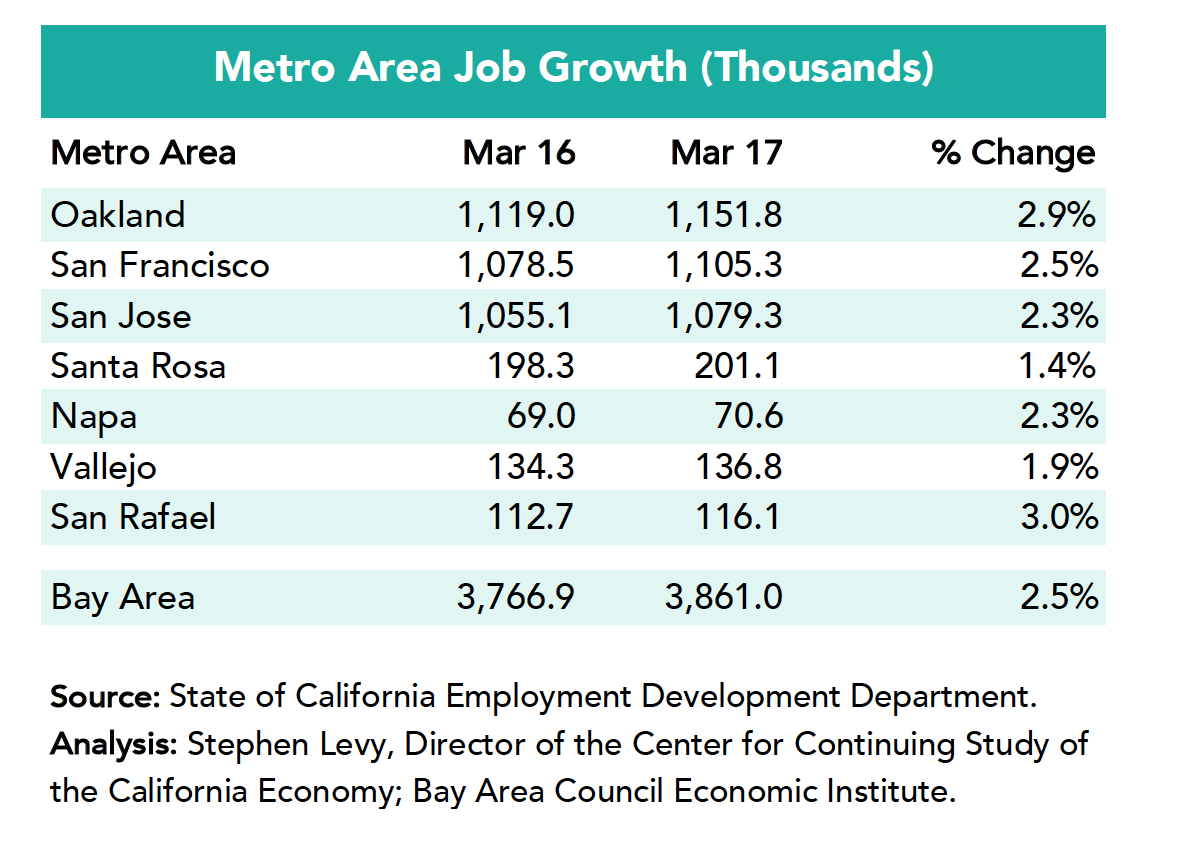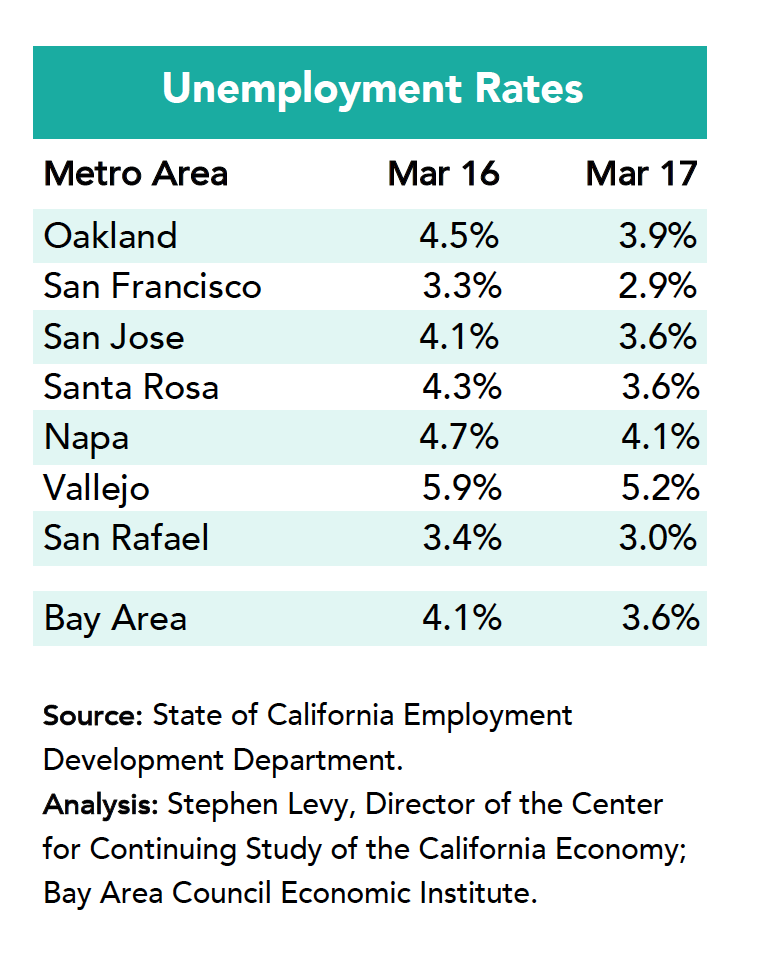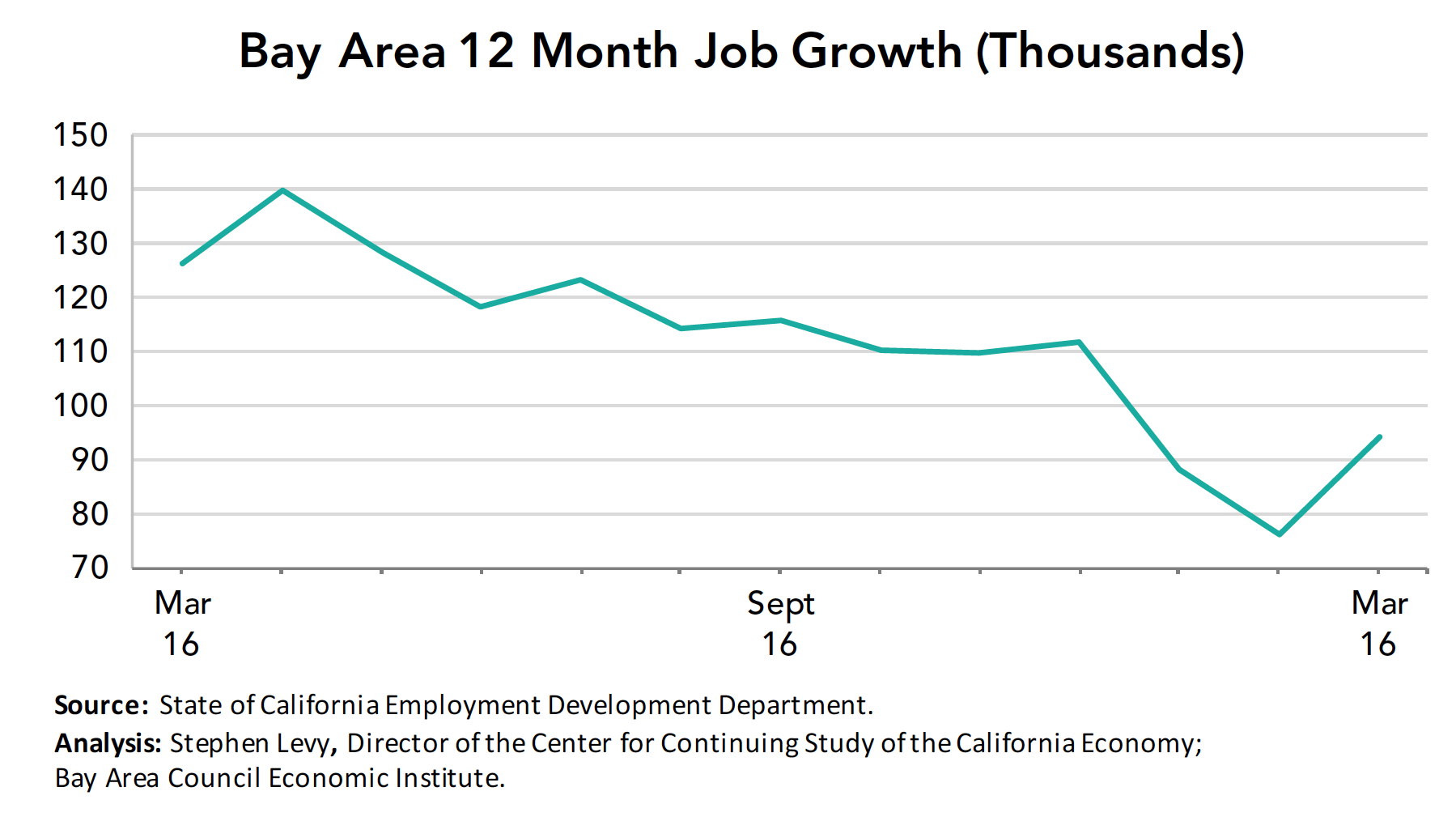
The California Employment Development Department (EDD) has released job and labor force estimates for March 2017. Here are the highlights.
- Job growth picked up in March led by gains in the Oakland metro area and the region again outpaces the nation and state in job growth.
- Unemployment and unemployment rates continue to decline throughout the region.
- National job growth slowed in March leaving the first quarter of 2017 with conflicting job trends in the nation, state, and region.
Year over Year Job Growth Strong but Slowing
The region added 94,100 jobs between March 2016 and 2017 for a gain of 2.5% compared to 1.5% for the nation and 2.1% for California.
Year over year job growth remains equal to or above the national average in all metro areas in the region except the Santa Rosa metro area though at a much slower pace than in the past two years. The Oakland metro area has become a growth leader in the past three months as the peninsula showed strong but slowing job gains compared to a year earlier.
The March job trends erase, for the moment, fears that January and February data showed a loss of competitive advantage for the region.

The job gains continue to push unemployment rates lower but labor force growth has slowed dramatically in recent months and is up only 0.3% over the past year. The regional unemployment rate at 3.6% is substantially lower than the national 4.5% and state 4.9% unemployment rates. Only the Vallejo metro area has an unemployment rate higher than the national rate.

Year over year job gains bounced back up in March after declining sharply in the first two months of 2017 from mid-2016 levels. It is too soon to know if the severity of the recent declines was a one-time event or reflects ongoing challenges for the region.

The continuing job growth now that unemployment rates have fallen will bring new residents to the region as will the growing need to replace retiring workers.
All of these trends underscore the importance of policies to increase housing and make sure that housing and transportation challenges do not undermine the region’s still vibrant economic competitiveness. Bay Area residents approved many funding measures for transportation and several local measures give hope that the housing supply and affordability challenges are being increasingly recognized by residents. The Bay Area Council has identified policies that can reduce costs and other barriers to expanding housing choices in the Solving the Housing Affordability Crisis report (2016).
While more communities such as San Francisco, Redwood City and Mountain View are now approving housing developments, the region has a long way to go and regional stakeholders will also want to watch the many housing bills now in the state legislature.